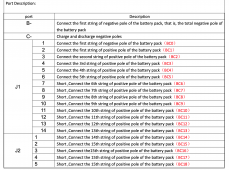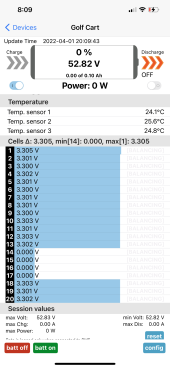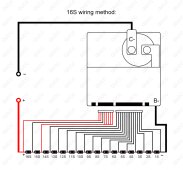But here are some of my questions about this BMS if anyone could answer I would be appreciated:
1- In the user manual is mentioned that using these BMSs in series or parallel are not allowed? Why ? because there is 900V, 500A contactor ! it is not mosfet based bms that limit you on drain sorce voltage limitation! or sharing equal current of multiple parallel mosfets for parallel connection!
I want to know if someone use it to series up to 4 x 48V , 100A pack still is not allowed to series these packs?
2- Is it capable to connect directly to inverter actually does it have precharge/time delay functionality?
3-Does it have ability to disconnect the inductive loads like motors without contact failure?
4- It mentioned in the datasheet that at short circuit condition delay is 500usec ! how is it possible ? there is not mosfet that can switch load off so quickly, it is a contactor therefore it should be possible to disconnect the load in a couple of 10 miliseconds even some time to suppress arc and in this condition shortcircuit current can rise up to failure point and welding relay contact unless it can limit the shortcircuit current! and it use some mechanisms like dc MCBs.
1- In the user manual is mentioned that using these BMSs in series or parallel are not allowed? Why ? because there is 900V, 500A contactor ! it is not mosfet based bms that limit you on drain sorce voltage limitation! or sharing equal current of multiple parallel mosfets for parallel connection!
I want to know if someone use it to series up to 4 x 48V , 100A pack still is not allowed to series these packs?
2- Is it capable to connect directly to inverter actually does it have precharge/time delay functionality?
3-Does it have ability to disconnect the inductive loads like motors without contact failure?
4- It mentioned in the datasheet that at short circuit condition delay is 500usec ! how is it possible ? there is not mosfet that can switch load off so quickly, it is a contactor therefore it should be possible to disconnect the load in a couple of 10 miliseconds even some time to suppress arc and in this condition shortcircuit current can rise up to failure point and welding relay contact unless it can limit the shortcircuit current! and it use some mechanisms like dc MCBs.
Last edited:






